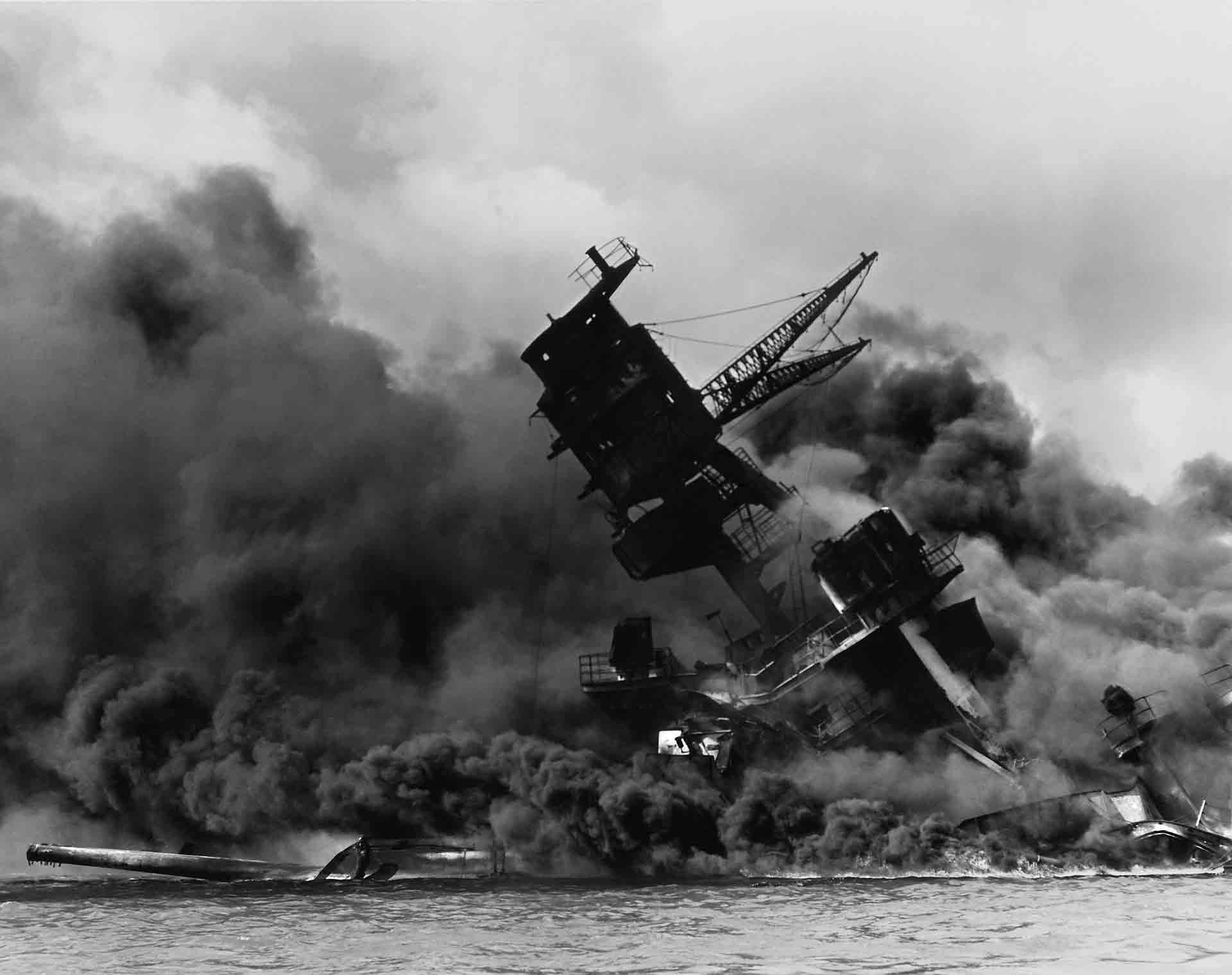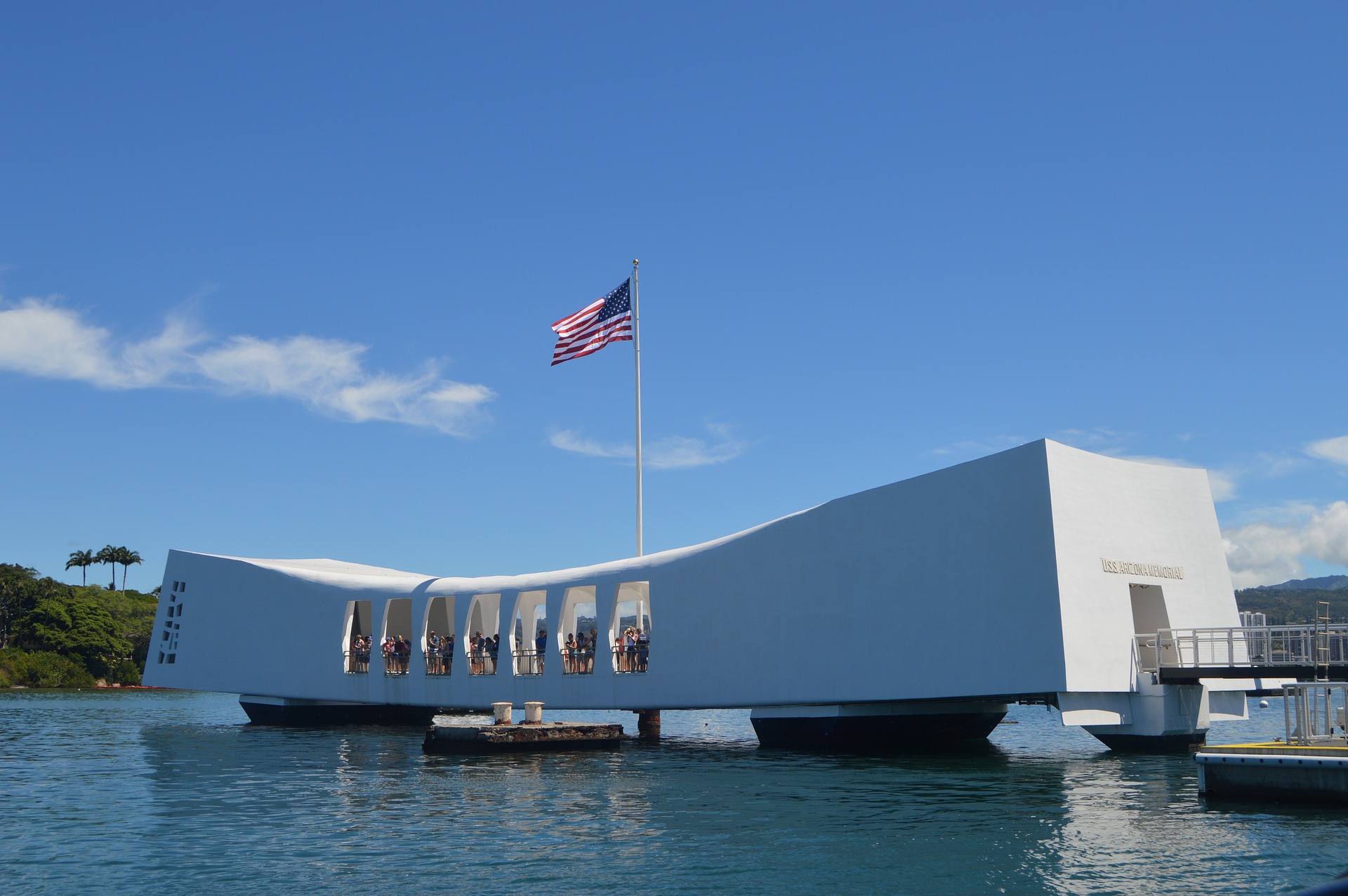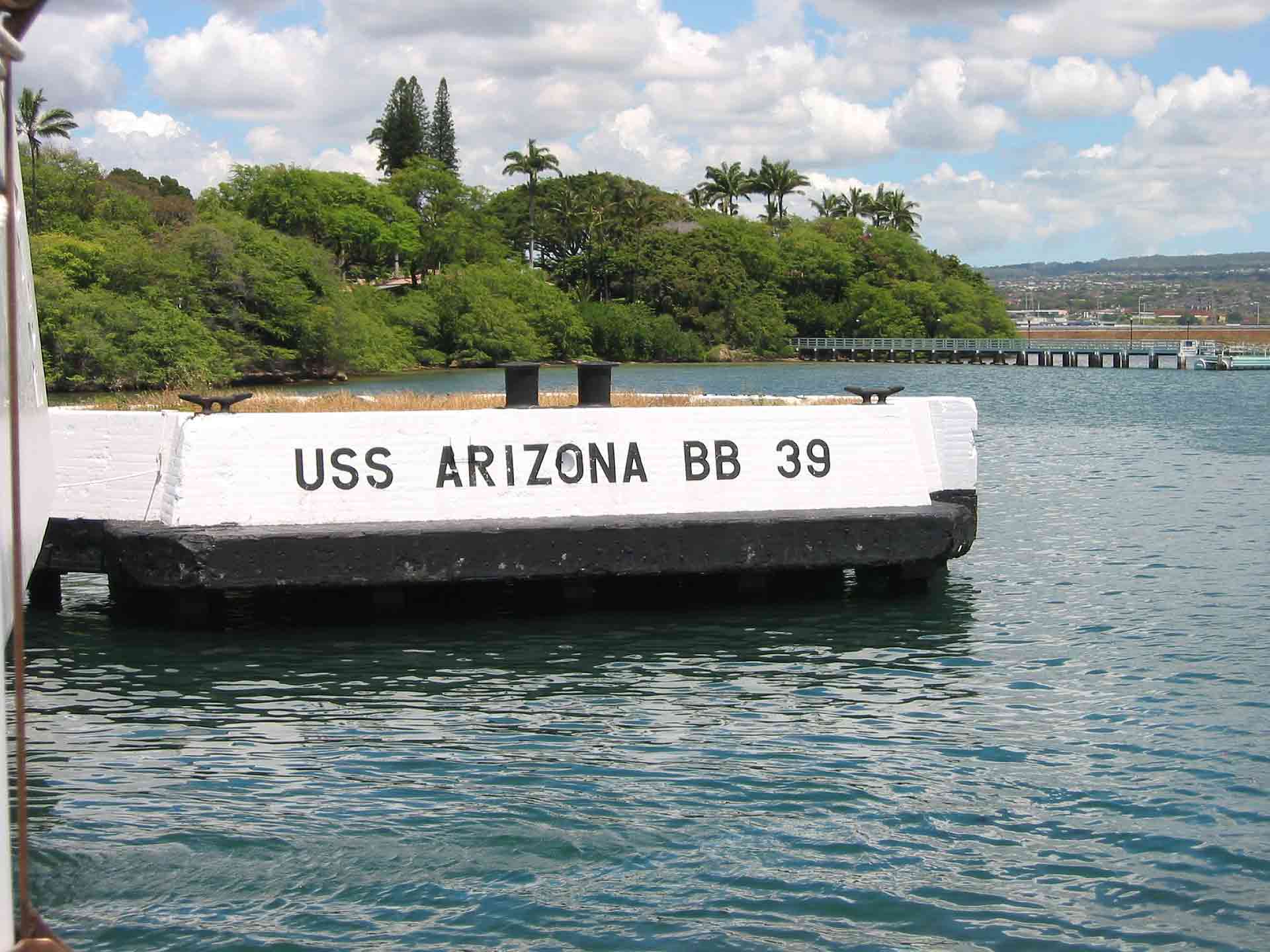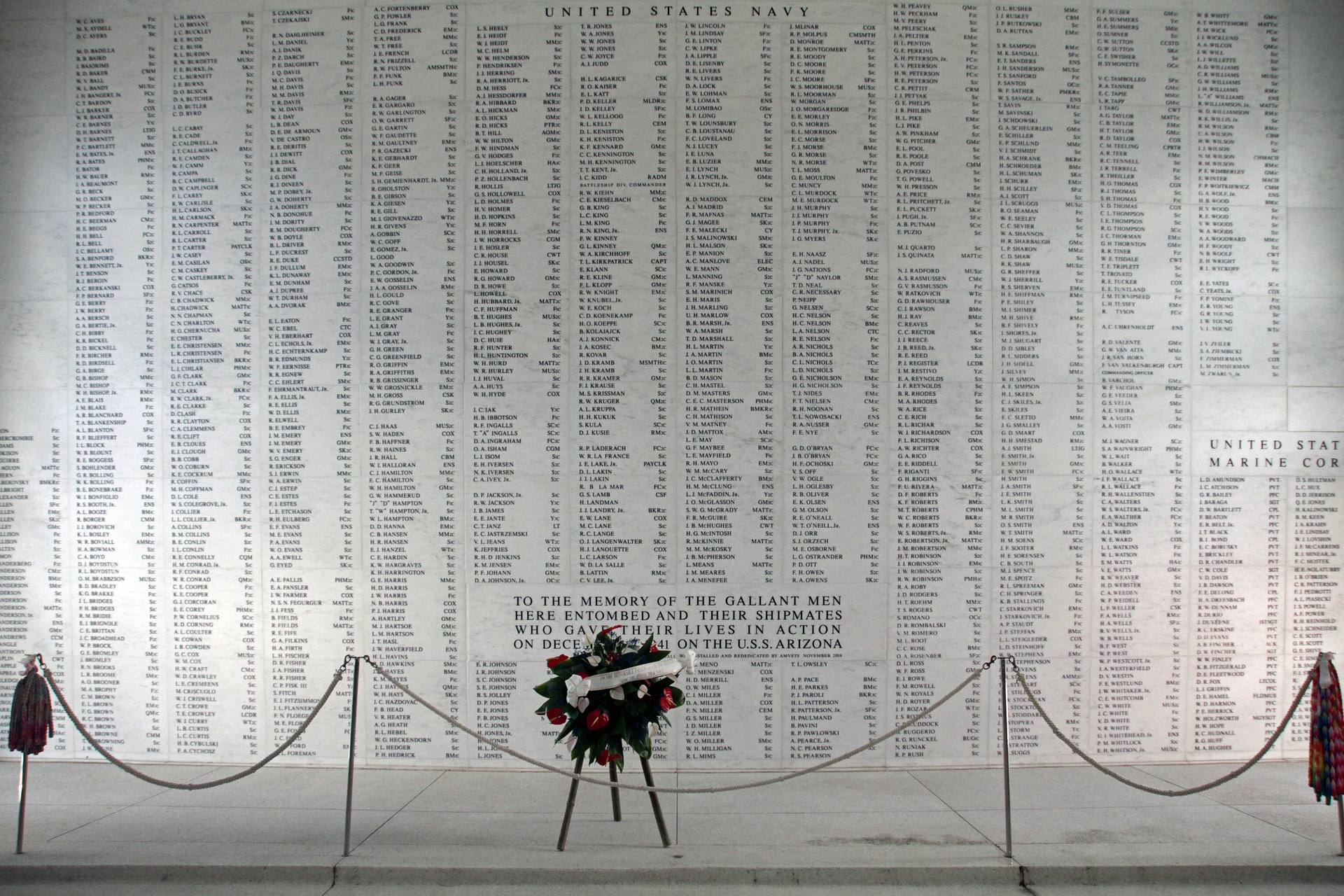Pearl Harbor
The Attack on Pearl Harbor
Dec 7th, 1941
Remembering the attack that shocked a nation and will forever be a day of infamy for our great country.
By Kaitlynn Jane – Network World News
10 min read
The Attack on Pearl Harbor

Attack on Pearl Harbor
Historical tragedies have been plaguing our world since the beginning of time. Bombs have been dropped on cities, leaving death behind. In these events, victims are left to deal with the aftermath of war and conflict. In 1941, Pearl Harbor became one of those infamous events that produced the destruction of many individuals and property.
Even now, the remembrance of this day burns in the minds of many Americans. When the Japanese bombed Pearl Harbor, American families were affected, and many Japanese- American soldiers were torn from their homes, and there was a great deal of physical damage. Japanese – Americans were the targets of American aggression after Pearl Harbor destroyed many families.
This event was the chance for Anti-Asian sentiment to develop and grow throughout the Western States. They lost their homes and belongings to the government and became victims of illegal searches and seizures of property. More than 400 million dollars of their assets vanished without compensation (America at War n. page.).
In addition, the anger and paranoia due to the attack on Pearl Harbor caused our government to have reason to believe that any or all American-born Japanese could be or were spies for Tokyo Japan.
In the year 1942, President Roosevelt signed an Executive Order number 9066 for the detainment and imprisonment of 120,000 Japanese, that was almost two-thirds of the United States citizens at the time (International Encyclopedia 190). These innocent American people living on the West coast had become too much of a risk for the government to take.
This belief was the reason for their internment and is considered one of the worst cases of the violation of constitutional liberties ever! (America at War n. page.).
One of the detention camps during this time was Camp Harmony in Puyallup, Washington. While held in this and other camps the prisoners were asked to join the U.S army but were denied the right to resist the draft. Instead, they were forced to sign an oath of commitment to the United States, and as a result of their resentment over 8,000 of the Japanese- Americans prisoners were deported. The ones who stayed had to make U.S. flags and pledge to them.
Pearl Harbor Memorial Oahu Hawaii

Even after they supported the war by risking their lives, many Nisei (American-born Japanese whose parents emigrated from Japan), and war veterans were denied service in restaurants and barbershops (America at War n. page.). The discrimination was so horrendous that “Some of them were even lynched” (America at War n. page.).
Some Americans also terrorized immigrant Asian workers and began preventing them from receiving jobs. In 1942, the Immigration Act was signed to stop Japanese immigration. It was then realized that “…In particular, Japanese Americans on the West Coast were the victims of racial intolerance” (James Y. Sakamoto n. page.).
A Japanese American organization called the JACL (Japanese American Citizens League) was created to help them achieve more freedom but was soon discredited. However, the harsh treatment of the Japanese Americans was only the first part of the suffering involved with the attack on Pearl Harbor; the physical damage was even more incredible.
Two hundred seventy-five miles North of Hawaii, fifty-one dive bombers, forty torpedo bombers, and forty-three escort fighters left Japan headed to the harbor with no remorse to destroy Pearl Harbor. The attack demolished both the army and the weaponry used in the war. Moreover, it caught America off guard, leaving no time for preparation.
USS Arizona Memorial

They were utterly secluded, causing an extensive military loss. Japan’s goal was to keep the United States out of the war. “But once Americans saw themselves as victims, resistance to entering the war melted away” (International Encyclopedia 190).
The most memorable ship, The Arizona, which is under the Pearl Harbor memorial, was destroyed, killing 1,200 of its crew. Falling torpedoes annihilated the W. Virginia, Oklahoma, and Utah ships, sinking the California, Maryland, and Tennessee. They had no defense against the falling bomb blasts.
Almost all aircraft were damaged or crushed, taking out all our air support. The Japanese demolished the U.S. planes at about six different airfields on Oahu, leaving only thirty-eight aircraft left to fight. Even more crippling was that out of these planes left, ten were shot down.
A total of twenty-one ships were sunk or damaged, 188 planes were lost, and 155 were damaged (International Encyclopedia 190). Even the Japanese lost twenty-nine aircraft and fifty-five pilots, which was only a fragment of what America lost that day.
To make things harder, an attack on Wheeler Field left the army with a much-depleted fighter force. This lack of defense left 1,178 injured and approximately 2,500 American sailors and soldiers dead (Shirer 271). This “… resulting destruction crippled the Pacific fleet,” but fortunately, the carriers were out of harm’s way (Pearl Harbor Attack 1205). In conclusion, this massive attack left our ships destroyed, our military at a loss, and severe casualties, affecting the lives of many families and soldiers.
The suffering the soldiers and their families endured will forever be present in their lives. Many survivors of the attack on Pearl Harbor remember the death of their friends and shipmates on that day.
Soldiers at the military base relaxed when they thought the enemy planes were their own B-17 bomber aircraft leaving the United States and became entirely open for attack. As a result, the soldiers were abruptly awakened at 7:55 am on December 7th, 1941, to torpedoes falling on their ships, on Ford Island.
They desperately reached for the ship’s guns to fight back, but it did not do much good. The attack was so graphic that “Shaken onlookers recoiled in horror as fragments of ships and parts of bodies showered the other ships moored adjacent to Arizona” (Hemingway 42).
Soldiers remember the shrapnel from the explosions lodging into their bodies, killing many. Another thing that injured our troops was the aviation fluid and the oil aboard the ships, igniting and burning the crews. People were engulfed in flames, and civilians near the shore could hear them screaming for help.
Stratman, a crew member on the Arizona, can recall the burns that covered sixty percent of his body after his escape (Hemingway 42). Many parents were torn by the soldiers’ lives that were cut short by the sacrifices they made. They never got to see life through, and it was a wasted genius.
One of those soldiers was an Electrician’s mate, Charles Benton Taylor and 1,000 of his shipmates, leaving their families to mourn their loss (Pearl Harbor n. page.). Most would agree that this loss of life was enormous (Collar n. page.). Other victims were Admiral Kimmel and Major General Short, by being forced into early retirement and blamed for the attack’s results.
In other words, the deaths at Pearl Harbor were unfortunate and unfair to the soldiers who are gone and to the people left behind.
Pearl Harbor Memorial Wall - Hawaii

The victims of Pearl Harbor are the soldiers who died, the Japanese Americans who faced prejudice, and the families who lost their loved ones.
People consider this event the worst hostile physical attack by a foreign authority ever in United States history. It is a day most people refuse to forget because of what was taken from America. The surprise attack inflicted extreme damage on our military and killed many of our honored soldiers.
The after-effects were even more problematic on Japanese Americans, who were judged because of their ethnicity. After the smoke had cleared, there were numerous survivors, but so many did not make it through the day.
Wars and battles throughout history have produced many deaths, which leave families hopeless and desperate.
In this world, there will always be victims of discrimination, war, illness, and hatred. Every day those people live in the hearts and memories of every individual who has lost someone. To sum up, there are many memorable moments in war, but many victims.
Works and refrances Cited
"America at War: The Internment of Japanese Americans." American Decades. Ed. Judith S. Baughman, et al. Vol. 5: 1940-1949. Detroit: Gale, 2001. Gale Virtual Reference Library. Web. 19 Apr. 2012. Hemingway, Al. “Pearl Harbor survivors’ stories.” World War II. 01 Jan. 2001: 42. library. Web. 02 Apr. 2012. “Pearl Harbor.” International Encyclopedia of the Social Sciences. Ed. William A. Darity, Jr. 2nd ed. Vol. 6. Detroit: Macmillan Reference USA, 2008. p190. Gale Virtual Reference Library. Web. 19 Apr. 2012. “James Y. Sakamoto.” American History. ABC-CLIO, 2012. Web. 27 Mar. 2012. "Pearl Harbor Attack." U*X*L Encyclopedia of U.S. History. Sonia Benson, Daniel E. Brannen, Jr., and Rebecca Valentine. Ed. Lawrence W. Baker and Sarah Hermsen. Vol. 6. Detroit: UXL, 2009. 1205-1207. Gale Virtual Reference Library. Web. 19 Apr. 2012. “Pearl Harbor had an everlasting impact on sailor’s family.” Gannett News Service. 03 Dec. 2011: n/a. library. Web. 02 Apr. 2012. Shirer, Frank R. "Pearl Harbor." Dictionary of American History. Ed. Stanley I. Kutler. 3rd ed. Vol. 6. New York: Charles Scribner's Sons, 2003. 271-273. Gale Virtual Reference Library. Web. 19 Apr. 2012.